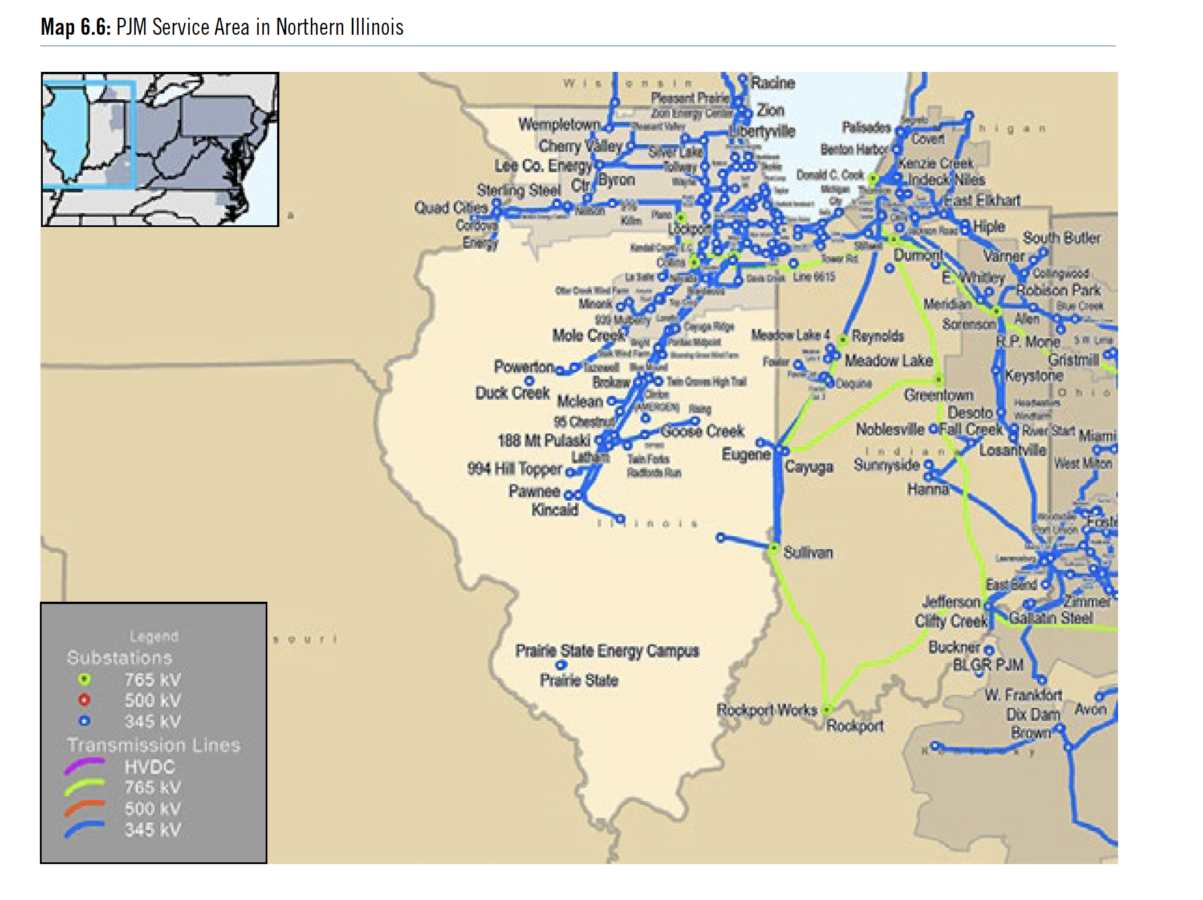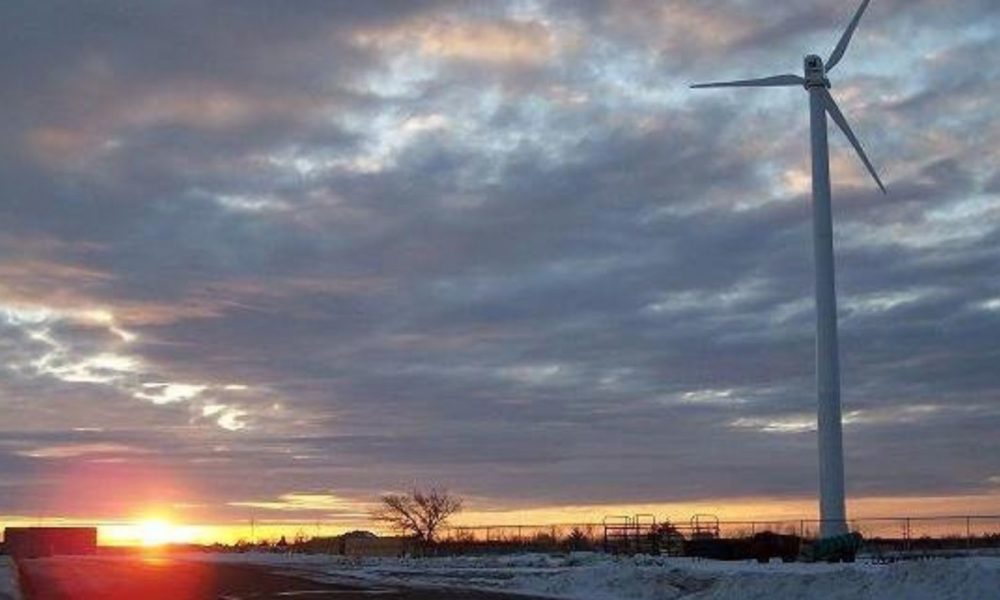The Illinois Climate and Equitable Jobs Act (CEJA) provides a wide range of new policies to reduce reliance on fossil fuel and promote cleaner air and a healthier climate. Now the implementation work has begun, and there is more work to do.
Regional grid operators PJM and Midcontinent Independent System Operator (MISO) have recently circulated important documents that spell out how they will apply CEJA to power plant emissions. PJM, one of two regional grid operators in Illinois, runs the grid for the northern portion of the state serviced by Commonwealth Edison (ComEd). (See the map below indicating PJM’s footprint in the state with a shaded area and blue transmission lines.) PJM hasn’t provided estimates of its emissions or how it will use exemptions allowed under CEJA, so I made a first estimate.

For the ComEd/PJM region, I expect exemptions to the pollution limits will be given by PJM for reliability as often as once every five days. More emissions from more exemptions are likely. I only looked at the simplest of the three causes of what may be routine and persistent supply conditions requiring exemptions for reliability.
The CEJA law has a set of provisions for operating fossil fuel plants to protect grid reliability. These provisions allow PJM and MISO to provide exemptions to the emissions limits on gas-fired plants. PJM listed five continued uses for fossil fuel plants to ensure grid reliability. Without building lots of new renewable generation, three of them will require the fossil generators to run often. MISO has the same five, plus two more.
The ComEd region of Illinois has limited transmission, making the generators in the Illinois portion of PJM more vital to meeting customer demand than might be expected. Similarly, reducing demand on PJM by ComEd customers with dynamic pricing, flexible load management, distributed solar and storage will all reduce the amount of generation needed on any particular day. In the longer term, Illinois’ ability to reduce fossil fuel plant operations will be improved by increasing transmission connections that can bring a diverse mix of wind and solar to supplement local carbon-free generation.
Not all the needed new clean energy is available yet
The limits of the transmission system will affect the ability to supply electricity to consumers in Northern Illinois and hamper efforts to reduce fossil fuel use and related emissions. PJM defines three types of situations that will predictably occur and require fossil fuel plants to operate. With the supply and demand as it was in the past year, those conditions requiring the use of fossil fuel plants will occur roughly 20 percent of the days, based on just the most readily predicted of the three uses.
More exemptions when examining the basics
The other two uses of PJM’s exemptions, for transmission overheating and transmission voltage issues, are much more specific to transmission designs and require specialized modeling and data sets. However, these needs will certainly increase the number of days when fossil fuel generation is used in PJM’s Illinois region.
Depending on how loosely PJM and MISO define CEJA emissions limits, they will use CEJA’s provisions extensively, creating exceptions to the emissions ceiling to maintain the electric system reliability. The simplest way to understand the need is to compare supply and demand. Until developers, homeowners and community groups build a lot more renewables and energy storage—and make a lot more efficiency improvements—supply limits will dominate this situation.
Demand for reliable generation in PJM’s Illinois region is just under 25,000 megawatts (MW). The existing generating capacity in this region totals 26,443 MW, and roughly half of them are provided by carbon emitters, namely 3,842 MW from coal, 10,760 MW from gas, and 272 MW from oil. If demand does not exceed the supply available to northern Illinois from 10,517 MW of nuclear, 1,049 MW of wind and 3 MW of solar (these are the reliable capacity numbers for the existing generation counted by PJM) plus roughly 3,000 MW of imported electricity from other states, then PJM will not activate its fossil fuel plants for generator supply reasons.
I took a look at the past year’s demand data for the ComEd region and counted the days when it was greater than the current level of PJM’s non-emitting generation serving Illinois. My first estimate comes to 20 percent of the days in the past year.
Transition to clean energy requires replacing plants
You may have noticed that the total for solar power was just 3 MW. That will soon change as 1,000 times that number is under development in northern Illinois, and storage is often included. PJM is only counting the generation selected in the PJM capacity market, and due to a different collision with state policies, there have been delays in capacity market auctions. Across all of PJM, solar developers added 1,500 MW of capacity in the most recent capacity auction. Whether the current solar numbers for northern Illinois is the currently recognized 3 MW or the 3,000 MW that are in the queue, there is much more work to do to get to the clean economy future that we want.
In the meantime, PJM and MISO must recognize the spirit of CEJA’s limits. PJM and MISO use market rules to deal with emissions limitations that already exist, but apparently those rules have not been considered as relevant to CEJA-affected power plants. MISO and PJM’s newly posted reliability guidance expect CEJA has no effect on the economics or availability of the fossil-fired generation now limited by law. This is not a good way for grid operators to work with their states. Until some common ground is found, CEJA implementation is going to be a reminder that implementing climate-safe energy policies is both a matter of building new supplies and changing how states, grid operators and utilities run the energy system.

